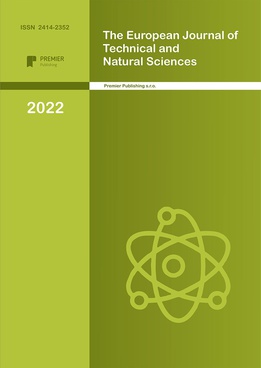An Augmentative Approach to Study Climate Change Using Random Forest
Authors
Dong Katherine

Share
Annotation
Understanding the best indicators of climate change is essential to predicting the magnitude of climate change in the future. Machine learning models can use features that indicate climate change to determine its impacts. To forecast mean temperature rise, the random forest algorithm is used on a collective dataset containing different indicators of climate change. The indicators include sea levels, temperature anomalies, CO2 levels, land minus ocean means, and arctic sea ice volumes. The original dataset began with one feature, mean temperature, and several other datasets were augmented to create a larger, more informative dataset. Projecting climate change is modeled as a classification problem with the mean temperature rise as a dependent variable using the random forest model. The features Land Minus Ocean Mean Rise Indicator, Arctic Sea Ice extent, and Mean Temperature Anomalies are the most important variables for predicting temperature change. Running the model yields an R-squared value of 0.58 with mean squared error (MSE) of 0.10, indicating a reasonably effective predicting power of climate change using the identified indicators. This research serves as a guide [NY1] [KD2] for effectively curating and augmenting climate change data and the forecasting of climate change and other similar environmental changes using similar temporal and statistics data.
Keywords
Authors
Dong Katherine

Share
References:
- Anderson G J and Lucas D D 2018 Machine learning predictions of a multiresolution climate model ensembleGeophys. Res. Lett.
- Andrews T, Gregory JM,WebbM J and Taylor K E 2012 Forcing, feedbacks and climate sensitivity in CMIP5 coupled atmosphere-ocean climate modelsGeophys. Res. Lett.
- Archer KJ, Kimes RV (2008) Empirical characterization of random forest variable importance measures. Comput Stat Data An 52:2249–2260
- Bellard C, Bertelsmeier C, Leadley P, Thuiller W, Courchamp F (2012) Impacts of climate change on the future of biodiversity. Ecol Lett 15(4):365–377
- Bradter U, Kunin WE, Altringham JD, Thom TJ, Benton TG (2013) Identifying appropriate spatial scales of predictors in species distribution models with the random forest algorithm. Methods Ecol Evol 4:167–174.
- Breiman L (2001) Random forests. Mach Learn 45:5–32
- Brook BW, Sodhi NS, Bradshaw CJ (2008) Synergies among extinction drivers under global change. Trends Ecol Evol 23:453–460
- Burns CE, Johnston KM, Schmitz OJ (2003) Global climate change and mammalian species diversity in US national parks. Proc Natl Acad Sci USA 100(20):11474–11477
- Cushman SA, Wasserman TN (2018) Landscape applications of machine learning: comparing random forests and logistic regression in multi-scale optimized predictive modeling of American marten occurrence in northern Idaho, USA. In: Humphries G, Magness D, Huettmann F (eds) Machine Learning for Ecology and Sustainable Natural Resource Management. Springer, Cham, pp 185–203
- Evans JS, Cushman SA (2009) Gradient modeling of conifer species using random forests. Landscape Ecol 24:673–683
- Evans JS, Murphy MA, Holden ZA, Cushman SA (2011) Modeling species distribution and change using random forest. In: Drew CA (ed) Predictive species and habitat modeling in landscape ecology: concepts and applications. Springer, New York
- Genuer R, Poggi JM, Tuleau-Malot C (2010) Variable selection using random forests. Pattern Recogn Lett 31:2225–2236
- Liaw A, Wiener M (2002) Classification and regression by randomForest. R News 2(3):18–22
- Nicodemus KK, Malley JD, Strobl C, Ziegler A (2010) The behavior of randomforest permutation-based variable importance measures under predictor correlation. BMC Bioinformatics 11:110
- R. Meenal, Prawin Angel Michael, D. Pamela, E. Rajasekaran (2021) Weather prediction using random forest machine learning model. Indonesian Journal of Electrical Engineering and Computer Science Vol. 22
- Rodriguez-Galiano VF, Ghimire B, Rogan J, Chica-Olmo M, Rigol-Sanchez JP (2012) An assessment of the effectiveness of a random forest classifier for land-cover classification. ISPRS J Photogramm Remote Sens 67:93–104
- Rogelj J, Meinshausen M, Knutti R (2012) Global warming under old and new scenarios using IPCC climate sensitivity range estimates. Nat Clim Change 2(4):248–253
- Sandri M, Zuccolotto P (2005) Variable selection using random forests. Data Analysis, Classification and the Forward Search. Springer, Berlin, pp 263–270
- Strobl C, Boulesteix AL, Zeileis A, Hothorn T (2007) Bias in random forest variable importance measures: Illustrations, sources and a solution. BMC Bioinformatics 8:25
- Thomas CD, Cameron A, Green RE, Bakkenes M, Beaumont LJ, Collingham YC, Erasmus BFN, Ferreira de Siqueira M, Grainger A, Hannah L, Hughes L, Huntley B, van Jarsveld AS, Midgley GF, Miles L, Orgeta-Huerta MA, Peterson AT, Philips AL, Williams SE (2004) Extinction risk from climate change. Nature 427(6970):145–148.
- Watanabe M et al (2010) Improved climate simulation by MIROC5: Mean states, variability, and climate sensitivity. J Climate 23(23):6312–6335


